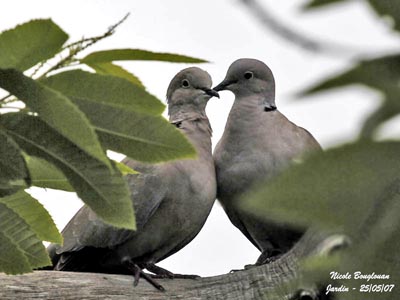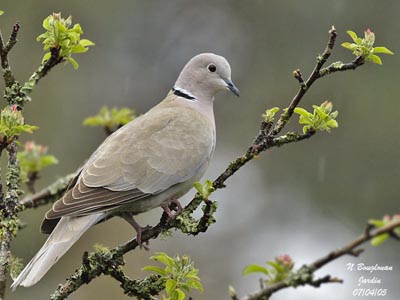March, 2010

New Doves on the Block Have you noticed these doves in our neighbourhood? Last summer was the first time that I saw them. When I looked them up in my bird book, the closest match I could find was a Ringed Turtle Dove but according to my book they were only found around Los Angles. That got me curious. At first glance, the Rue Chez Nous doves looked exactly like the LA ones. I thought I had made was a rare discovery because the dove was so far from home. My wife emailed a local bird watcher to tell him about our exciting discovery but despite similarities, he told us that they weren't the Ringed Turtle Dove at all but instead, the Eurasian Collared Dove. No wonder I made the mistake! The only way to tell the difference is to examine the tail feathers underneath when when they perch or when they fly. The feathers under the tail of the Eurasian Dove are grey with dark edges, the Ringed Dove's are white. |
 On
the Move On
the MoveThe Eurasian Collared Dove has spread rapidly across much of North America. It made a similar expansion across Europe in the 1900s. The dove is thought to originated in India. A massive expansion in the 1600s brought the doves into Turkey and the Balkans. The Eurasian Collared-Dove is often kept as a pet but they escape. Sightings in the the United States is thought to be from escaped or released pet birds rather than wild doves. One way or another, the Eurasian dove is on the move. The spread of the Eurasian dove has been somewhat hidden by it's similarity with the Ringed dove. The occurrence of the first Eurasian Collared Doves in the United States went unnoticed for years because of the confusion. To complicate matters further, the two species occasionally hybridize in wild populations. Now I see they are back. You can hear their characteristic "cooo, cooo, coo (2 long, 1 short)" I'm amazed they can survive our winter. Are they hybrids? Perhaps climate change means they are here to stay. |

